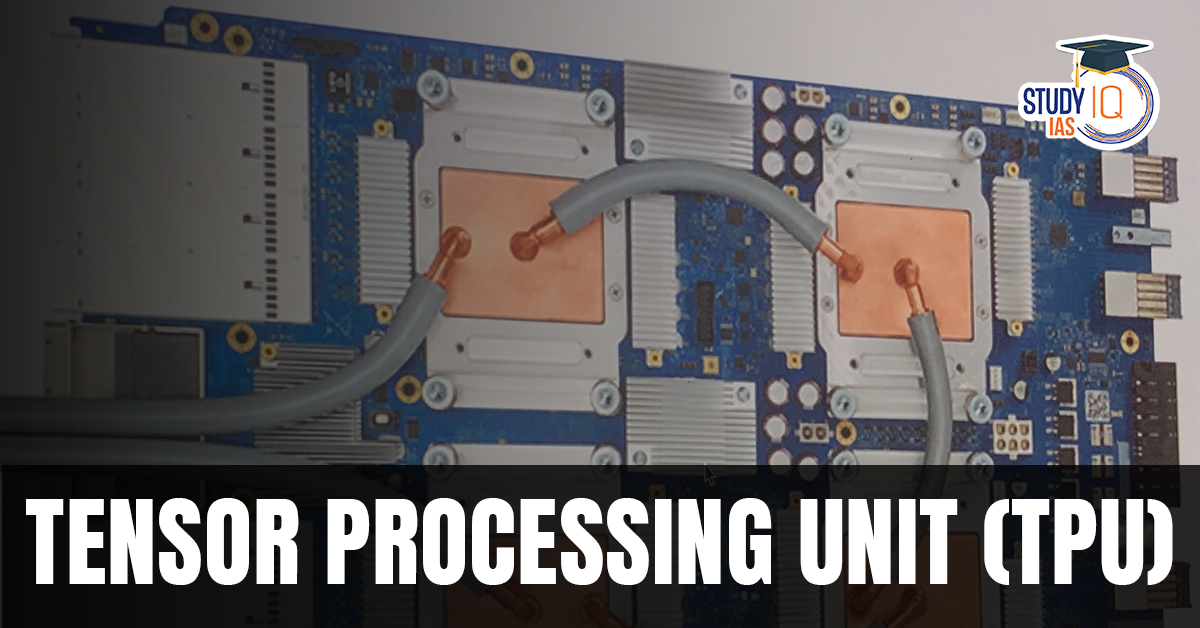Table of Contents
Context: Google has recently launched Ironwood, its seventh-generation Tensor Processing Unit (TPU).
About Tensor Processing Unit (TPU)
- Tensor Processing Unit (TPU) is an application-specific integrated circuit (ASIC) designed exclusively for accelerating machine learning (ML) tasks, like deep learning.
- They are built specifically to handle operations involving tensors (multi-dimensional arrays used in ML models).
Key Features of TPUs
- Designed for Machine Learning: Optimised for tensor operations, which are the foundation of neural networks.
- High Performance: TPUs offer significantly faster computation compared to CPUs and GPUs for ML tasks.
- Training that takes weeks on GPUs can be completed in hours using TPUs.
- Parallelism: Like GPUs, TPUs also use parallel processing, but are even more specialized. They can handle millions of tensor operations simultaneously.
- Energy Efficiency: More energy-efficient than GPUs and CPUs when running AI workloads.
Key Differences Between CPU, GPU and TPU
| Feature | Centra Processing Unit | Graphic Processing Unit | Tensor Processing Unit |
| Purpose | General Computing | Graphics & parallel computing | AI & ML-specific tasks |
| Processing Type | Sequential | Parallel | Tensor-based, parallel |
| Efficiency in AI | Low | High | Very High |


 Advanced Air Defence Radars: Types, Comp...
Advanced Air Defence Radars: Types, Comp...
 Ion Chromatography, Working and Applicat...
Ion Chromatography, Working and Applicat...
 Broadly Neutralising Antibodies (bNAbs):...
Broadly Neutralising Antibodies (bNAbs):...

























